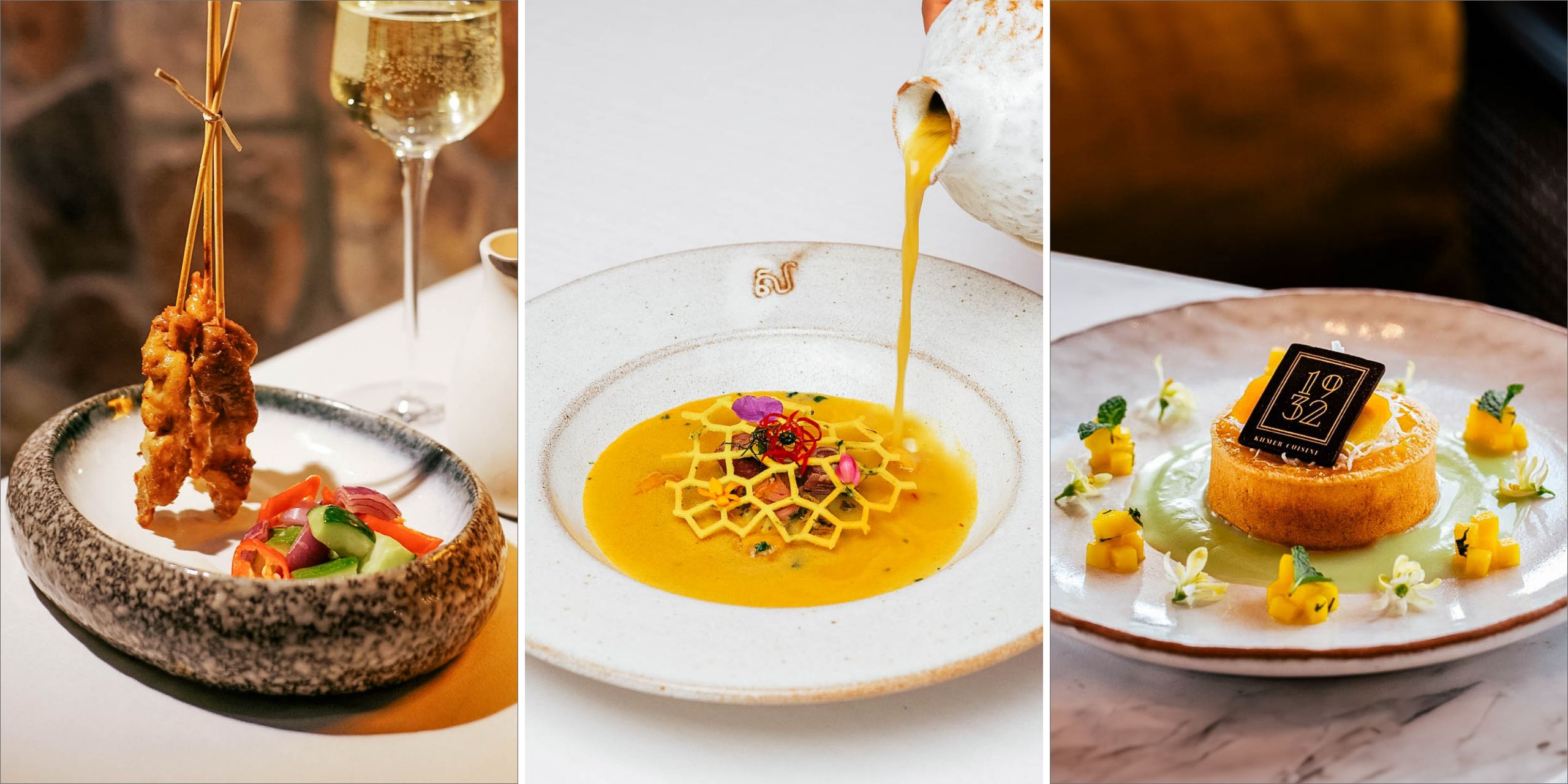
In 2011, French chef Joannès Rivière—who had worked in the US and France, moved to Siem Reap in 2003 and learnt fluent Khmer—set up his restaurant in a picturesque wooden house with his partner Carole Salmon, named after the village in which it was located.
He was fascinated by local flavors and ingredients and spent countless hours in local markets choosing his produce.
Eventually, that venue — Cuisine Wat Damnak— introduced a tasting menu that drew acclaim, a fanatical niche-market following and a steady flow of discerning diners from around the world eager to taste its refined dishes. In 2015 and 2016, it was famously the first Indochinese restaurant to break into Asia’s 50 Best Restaurants list.
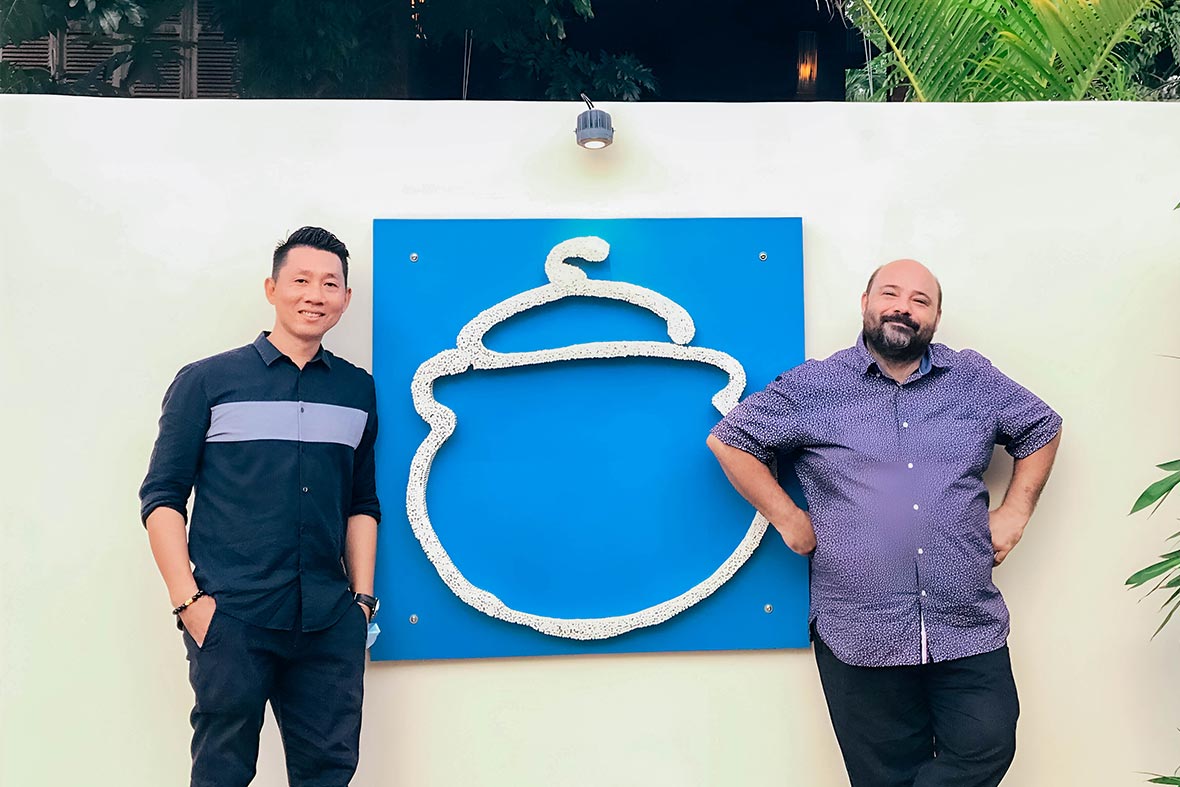
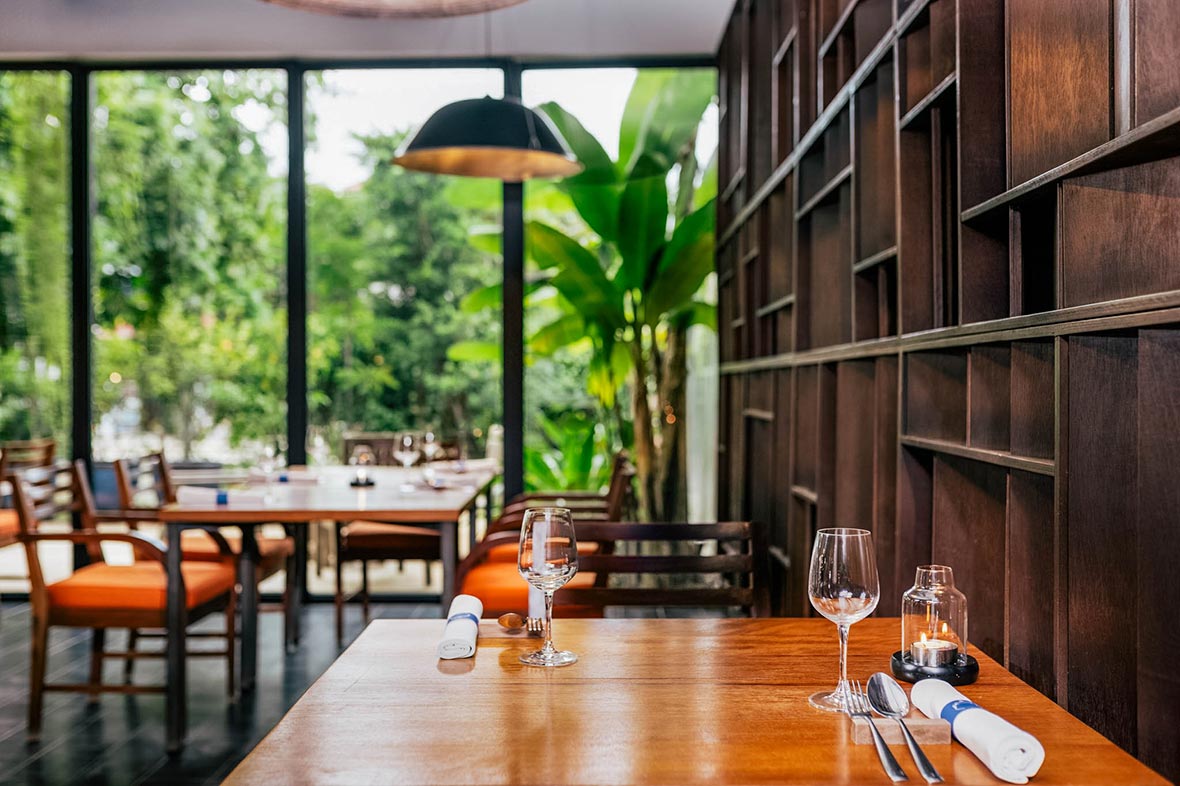
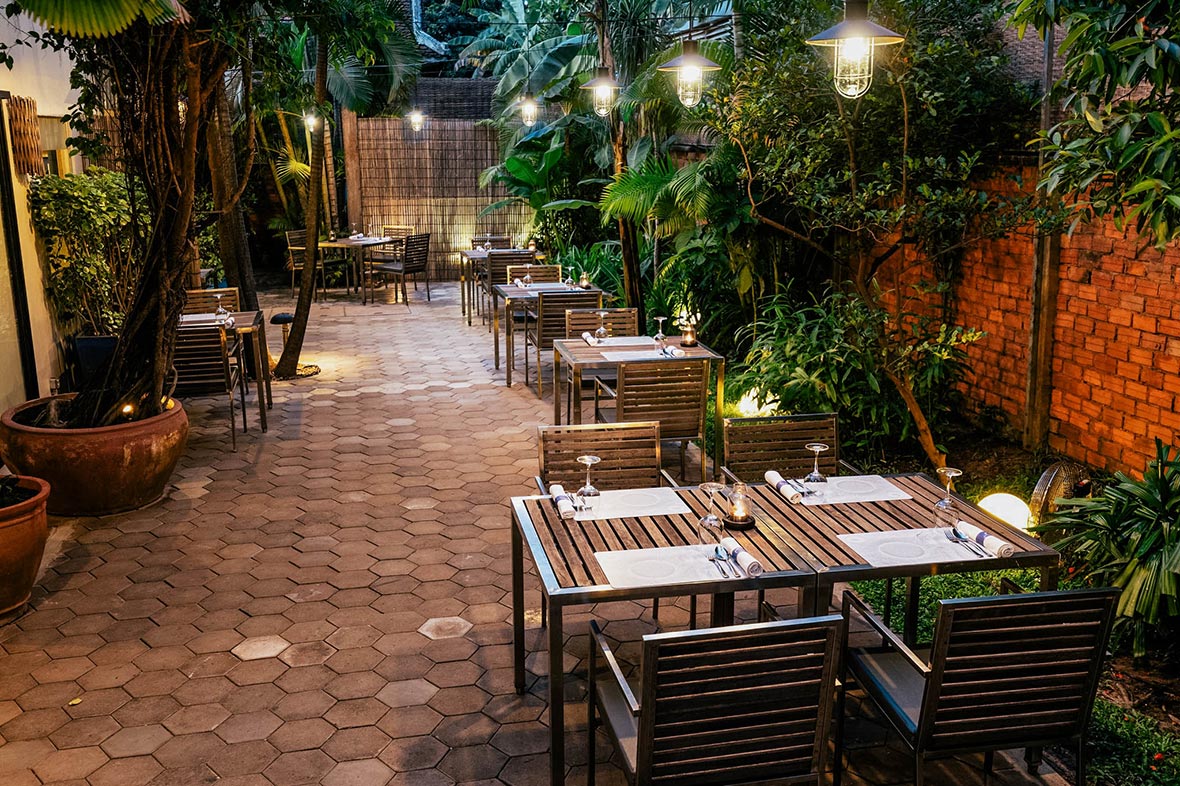
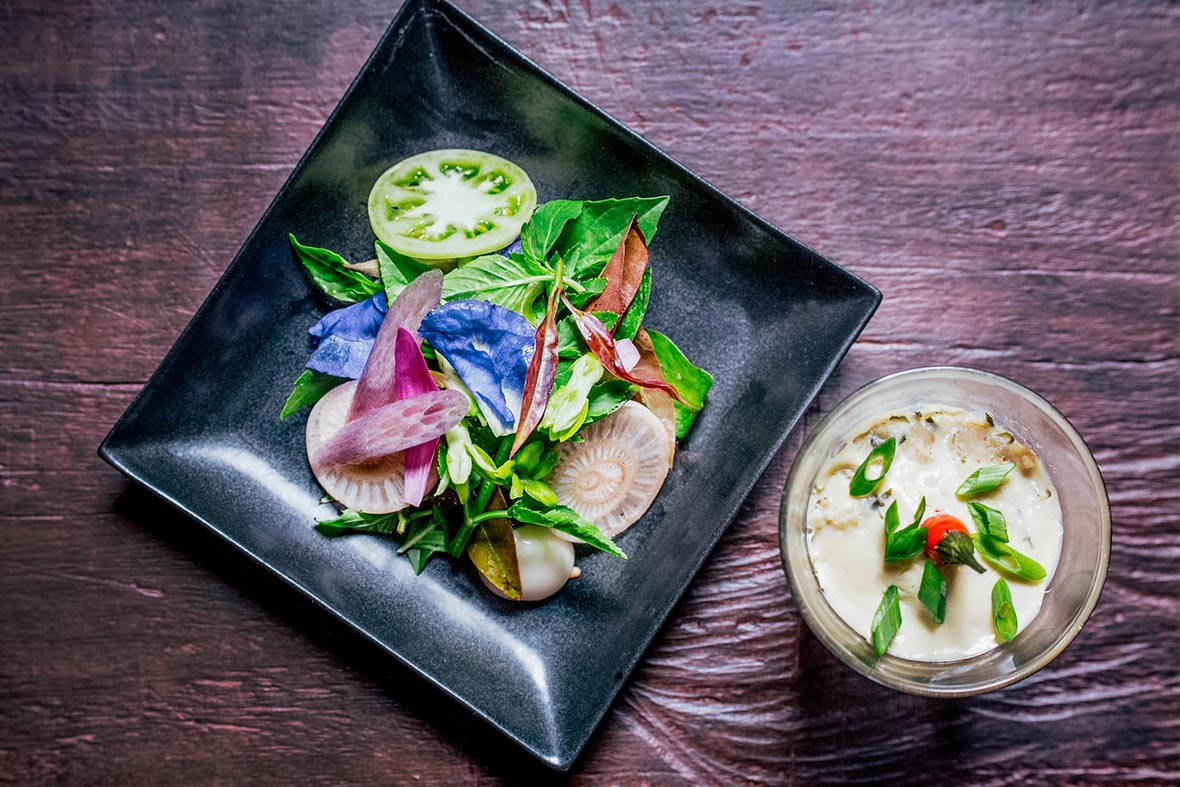
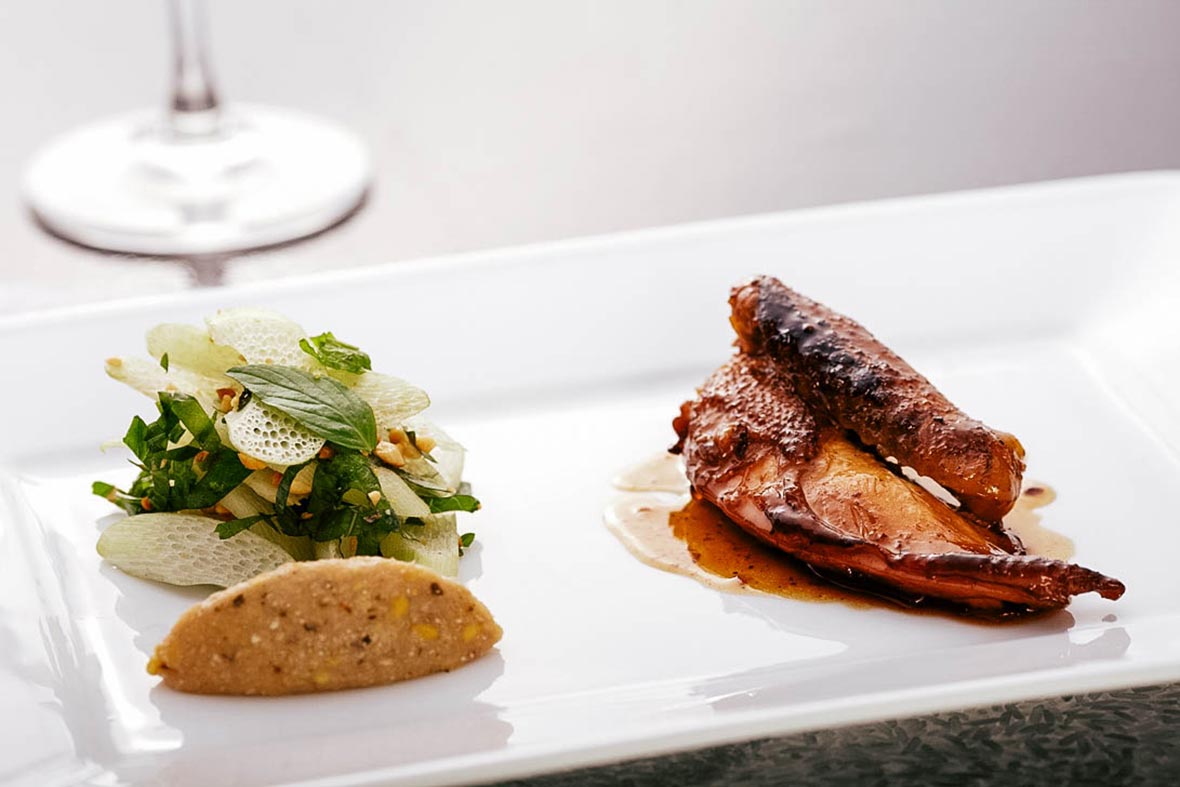
Rivière’s friend, the highly driven chef-cum-maître d’ Nguon “Chai” Vengchhay from Battambang, worked with him at the former Hotel de la Paîx (later Park Hyatt) in the early noughties before embarking on a hospitality and culinary adventure of his own.
After stints in Cambodian five-star hotels, the members-only American Club in Singapore, a luxury island resort in Fiji and a demanding role at the Las Vegas-style Wynn Palace in Macau, Chai returned to Cambodia in 2018 and the following year was reunited with the chef-patron Rivière.
Chai, now Cuisine Wat Damnak’s co-owner and director, oversees a sumptuous, unpredictable experience. The regularly changing tasting menu, a lesson in culinary exotica, may contain such unlikely concoctions as Tonle Sap croaker fish, wild candle yam, creamed amaranth, rice flakes and coconut broth; or pan-fried Mekong langoustine, calamari, rice porridge, turnip and chrysanthemum sprouts.
New Kid in Town
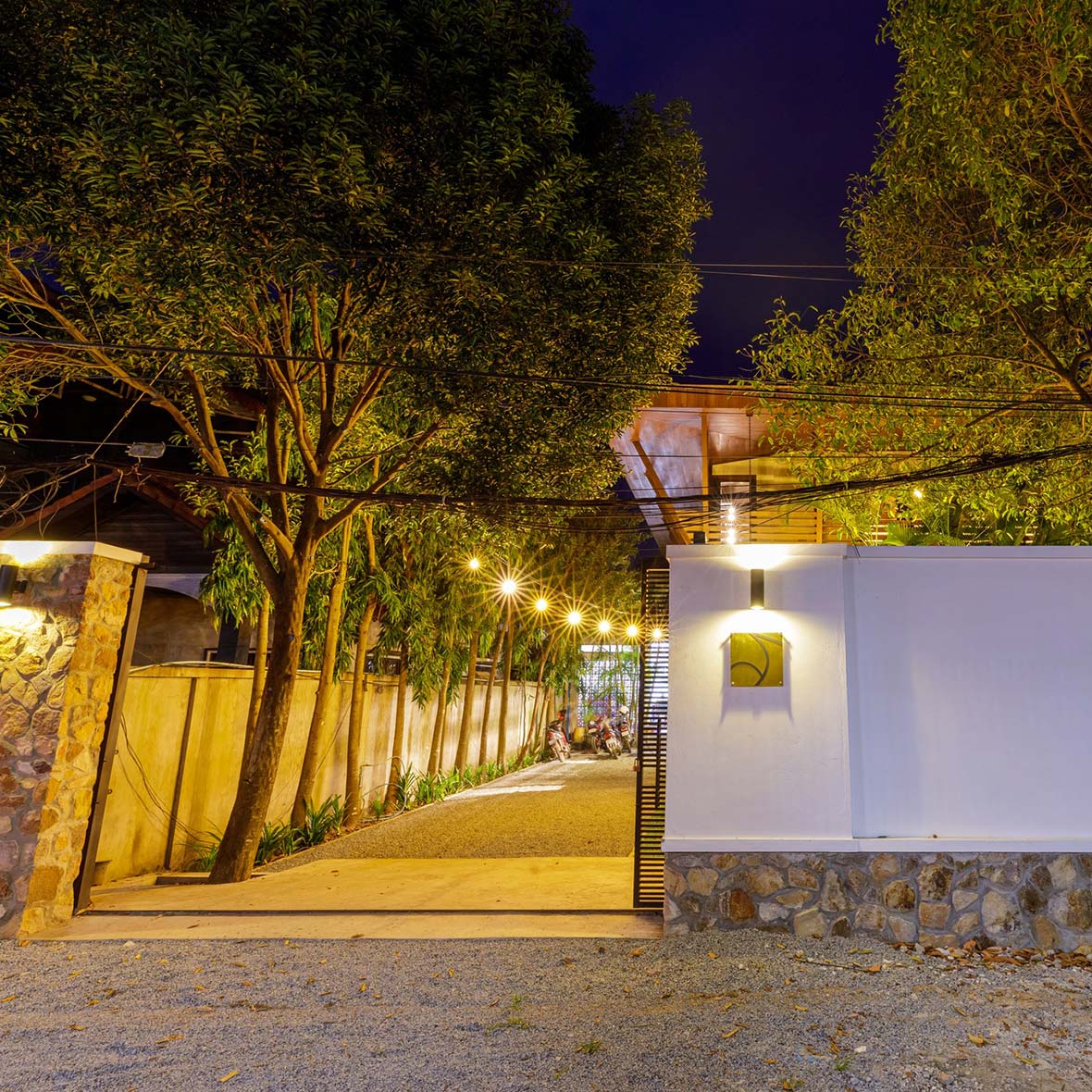
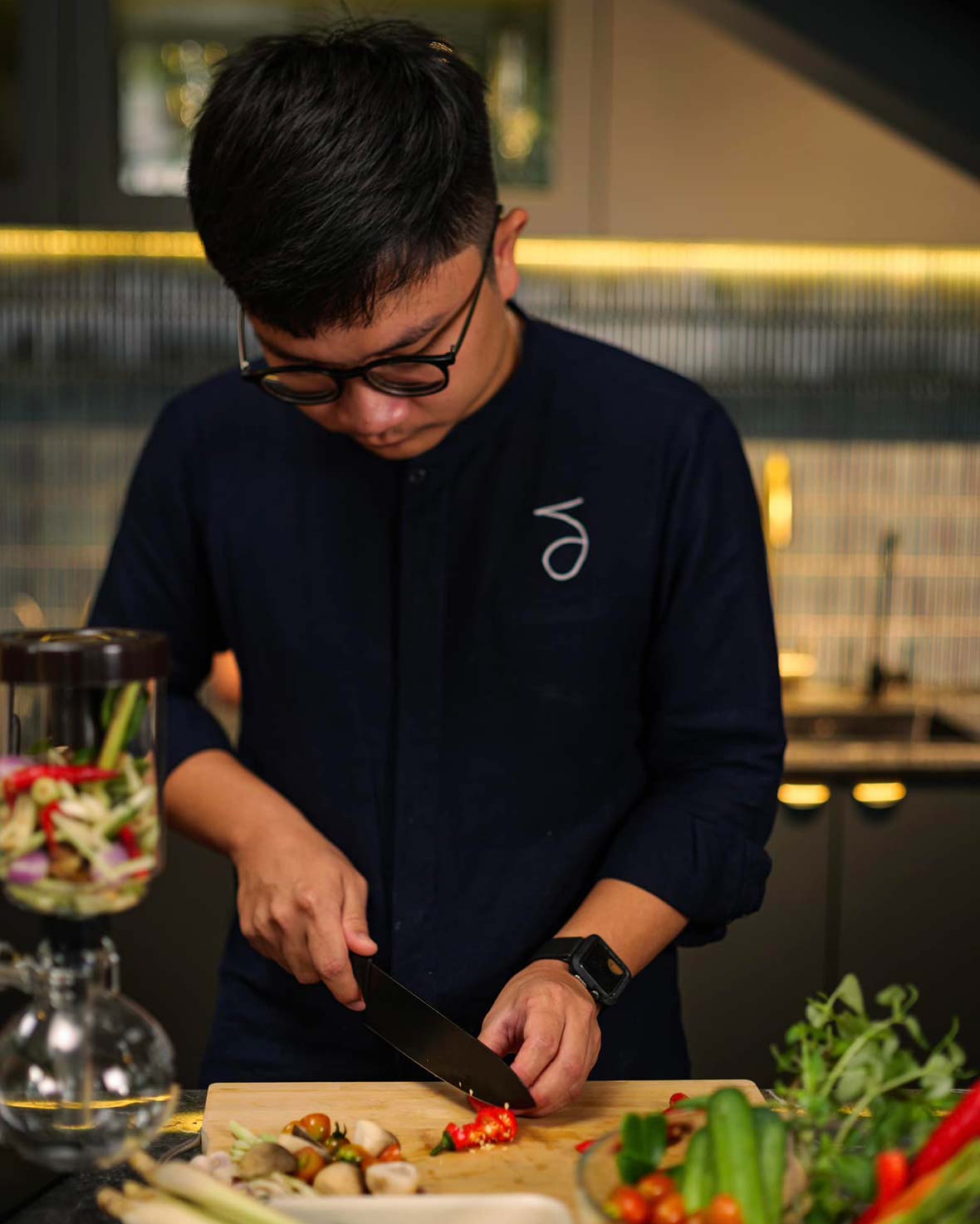
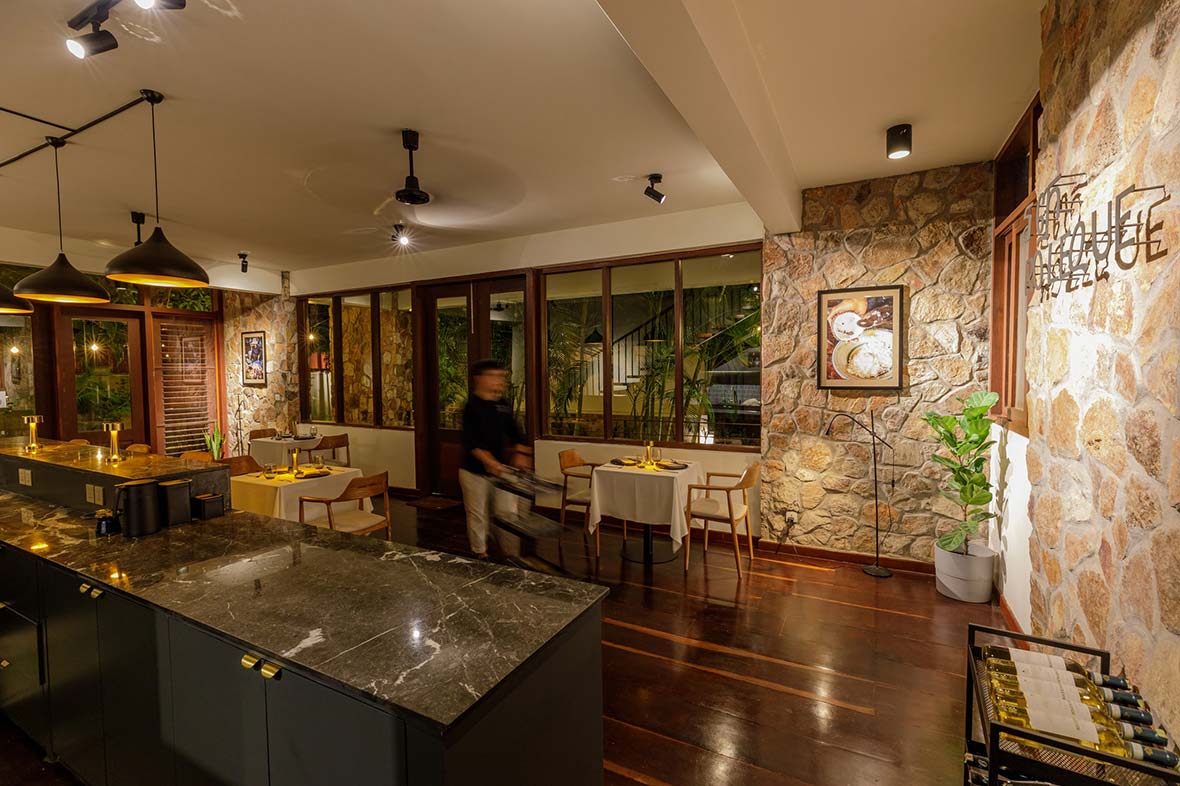
If Cuisine Wat Damnak is an old-stager, Roleque (“recall” in Khmer) is an upstart. The venue, opened in late 2022 in a secluded street near Siem Reap River, is the creative brainchild of inspiring chef Phy (Kongleaphy Keam), who previously oversaw an elegant restaurant in Phuket.
He has collaborated with Isabelle Ri, a Singaporean artist whose vivid paintings emblazon the upper-floor gallery of this incredibly intimate space. Fittingly, Roleque’s tagline is “where art meets gastronomy”, and rave reviews have likened the restaurant to being akin to entering a friend’s house before being treated to a gustatory sensation.
“Isabelle came as a customer,” recalls Phy. “She returned multiple times until we became friends and found that we shared similarities. I cook and craft menus based on my memories—childhood and travel—while Isabelle also paints from her memories in Cambodia. Then, we came up with the idea – why don’t we link food and art together? I interpreted her painting of a Siem Reap sunflower field into the seven-course set menu ‘Art, Gastronomy & Flowers’, where all courses included home-grown edible flowers.”
But why Siem Reap when Phy’s hometown is Phnom Penh? “It started when [co-founder] Panhary Prouen introduced me to her parent’s house in a hidden alley,” Phy explains. “A chef’s table should be somewhere hidden and exclusive. The second reason [is that] we both love Siem Reap, and we want to promote Khmer food.”
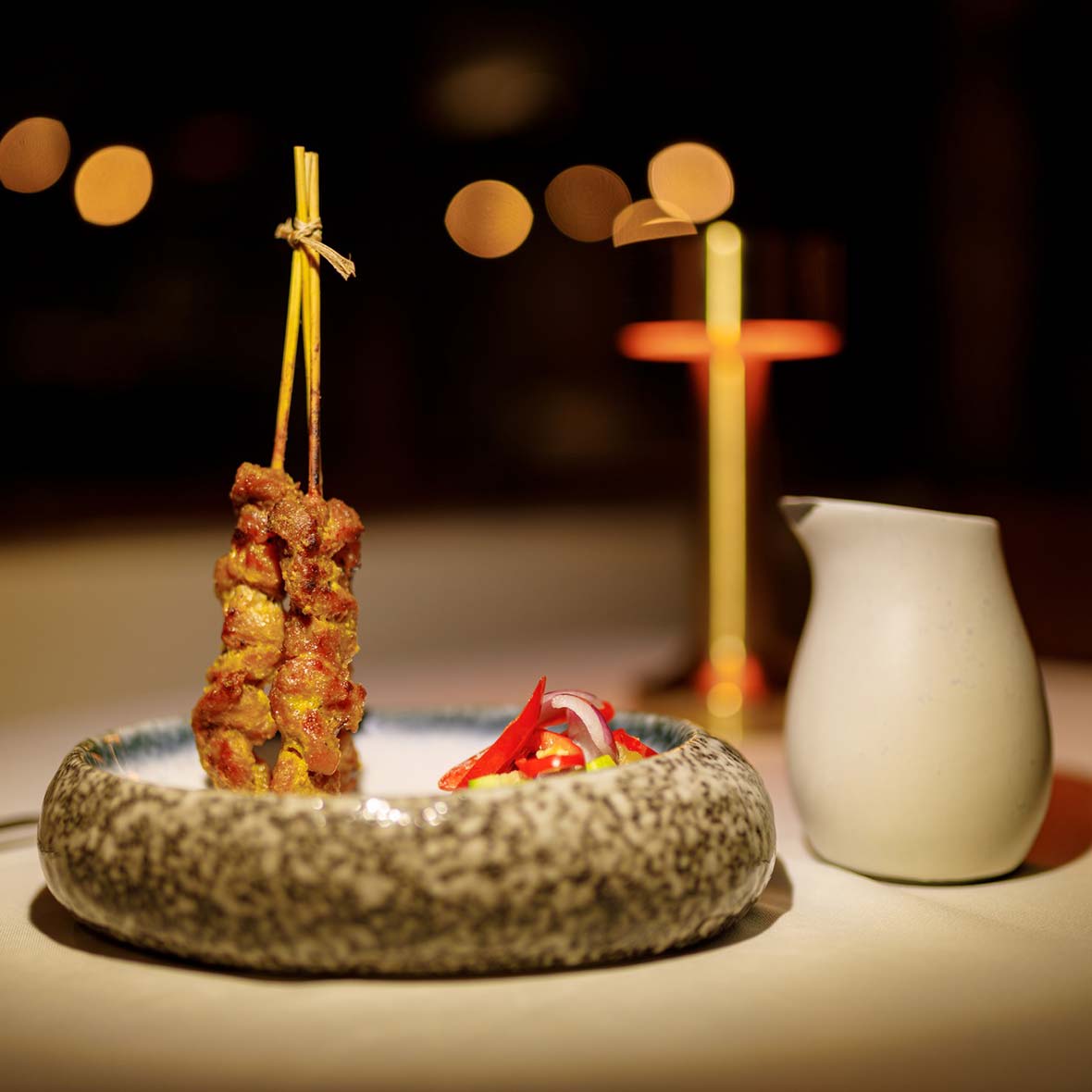
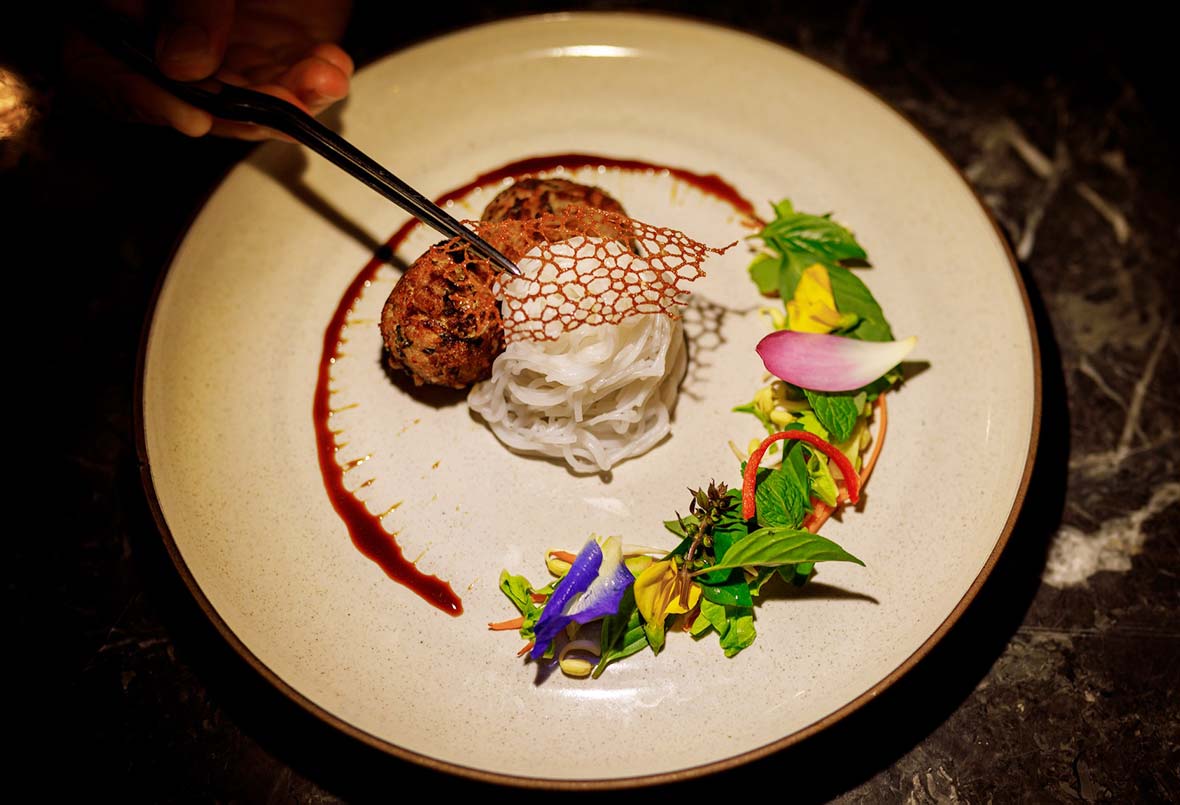
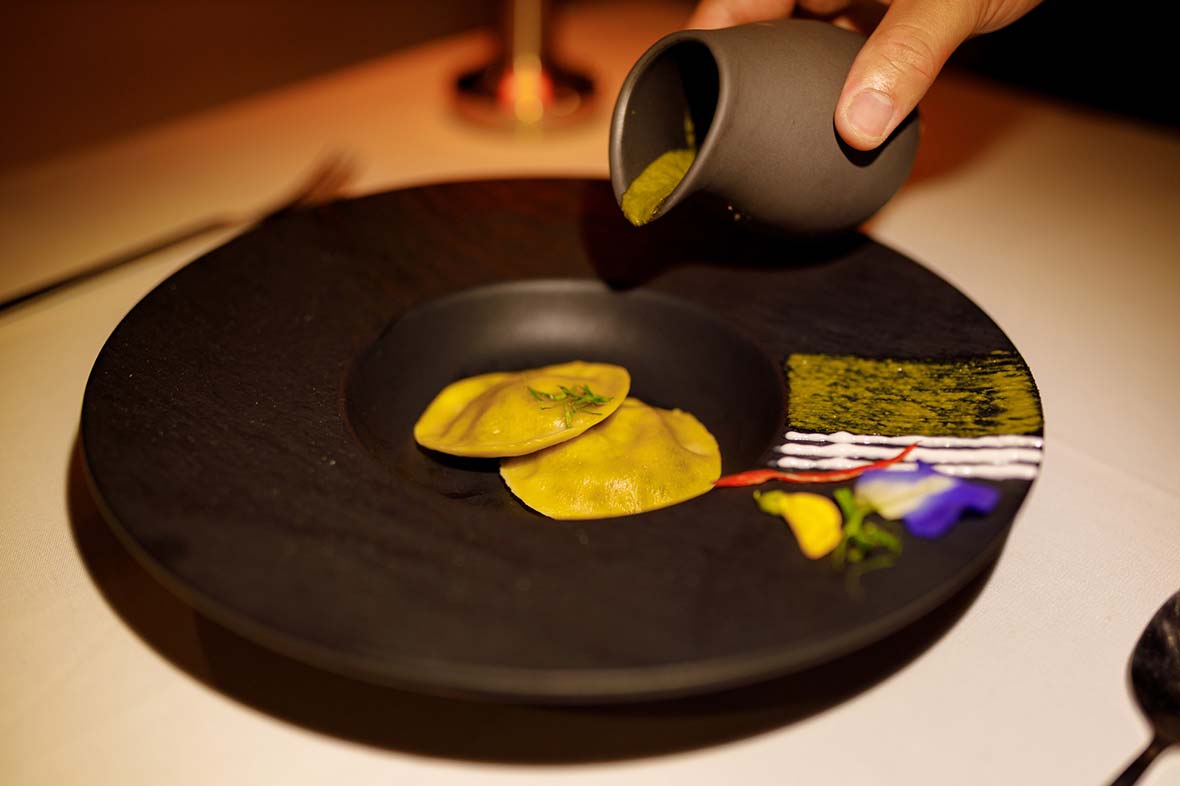
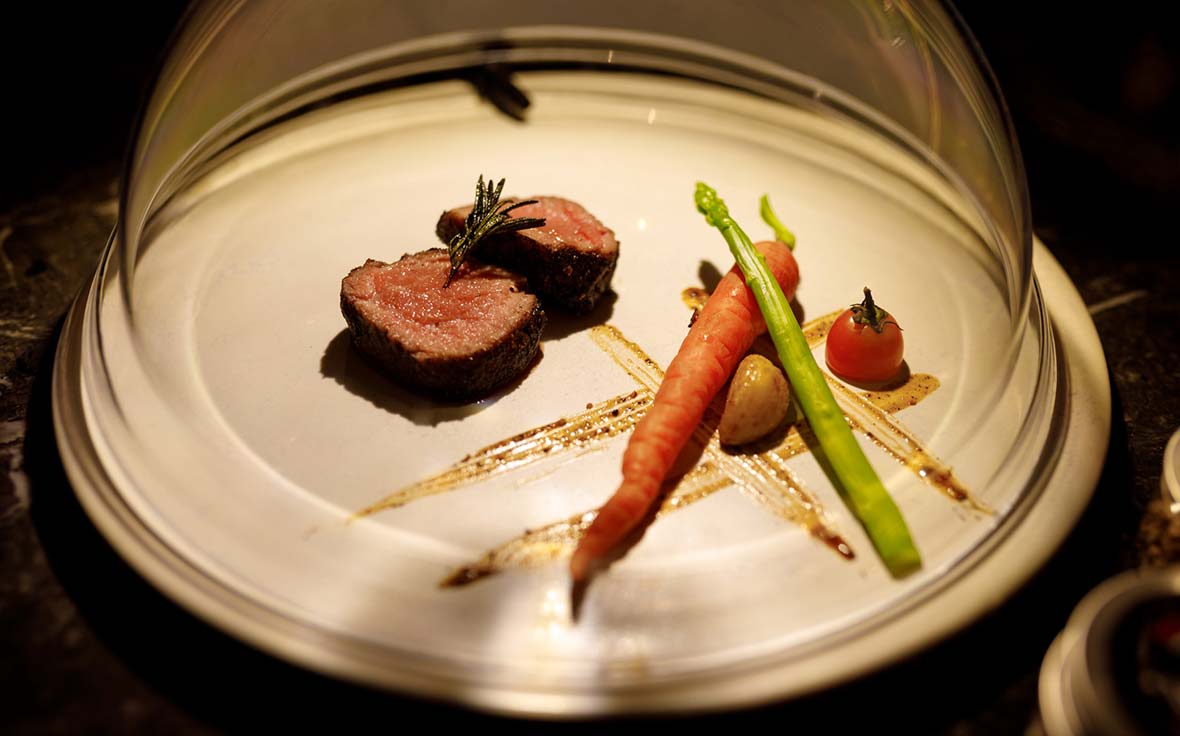
The open kitchen adjoining the tables is chef Phy’s domain and workshop, where he busily rustles up innovative Khmer-European fusion cuisine while simultaneously relating stories to diners about his recipes’ historical origins, ingredients and flavours. It’s a seven-course experience that may be paired with wine, but the soirée’s offerings are so sensuous and absorbing—and served so speedily by Phy—that a three-hour dinner can feel significantly shorter. This is elevated dining presented with all the efficiency of fast food.
To add to Roleque’s allure, this young fine-dining pretender in a traditional house sits in a postcard-pretty garden that doubles as a fine post-dinner conversation spot. Guests may also adjourn upstairs to the gallery space surrounded by a wraparound balcony usually reserved for private events. Not surprisingly for a restaurant of this calibre, the high demand and minimal table space means booking several days in advance.
Given the tiny dining room, doesn’t Chef Phy aim to expand operations in the future? “In the first few years, we plan to keep Roleque as it is,” he says. “The scale at which we are operating matches Roleque’s core value, which is to make all guests feel exclusive like they are visiting their friend’s house for dinner. We believe that guests should not dine to get full; we want to showcase the beauty of local ingredients and the history of our foods.”
Let’s Hear it for the Ladies
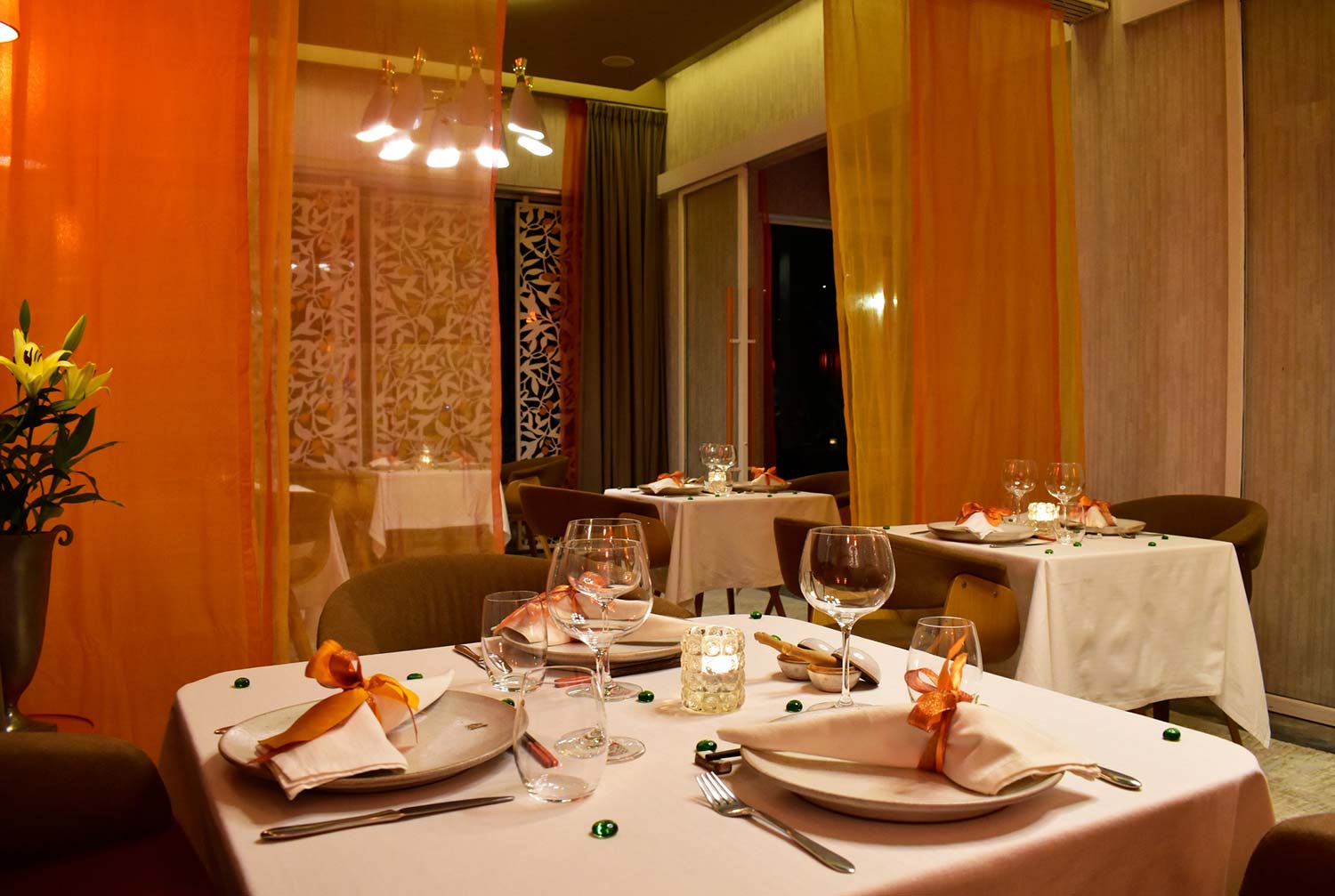
Embassy was first conceived in 2015 as a distinctive fine-diner with an all-women team, overseen by executive chef Kimsan Pol—along with her twin sister—after Kimsan’s stellar performance in training at prestigious cooking schools in both Paris and Siem Reap. Purely in terms of aesthetics, it’s a simply ravishing space which it only recently occupied after relocating in February 2023.
Embassy’s spacious new headquarters are enlivened by a bright orange color scheme throughout that’s also adorned by the ladies who work there. The restaurant’s desirability is also greatly enhanced by its location in a delightful garden detached, yet still highly accessible, from the city center.
Melt-in-the-mouth Khmer cuisine with a modern twist dominates the monthly-changing three-course menu, a style chef Kimsan has perfected over years of experimenting with new techniques. This is in part designed as an introduction to the best of Cambodian food for uninitiated guests curious about the dietary predilections of the Kingdom of Wonder’s inhabitants.
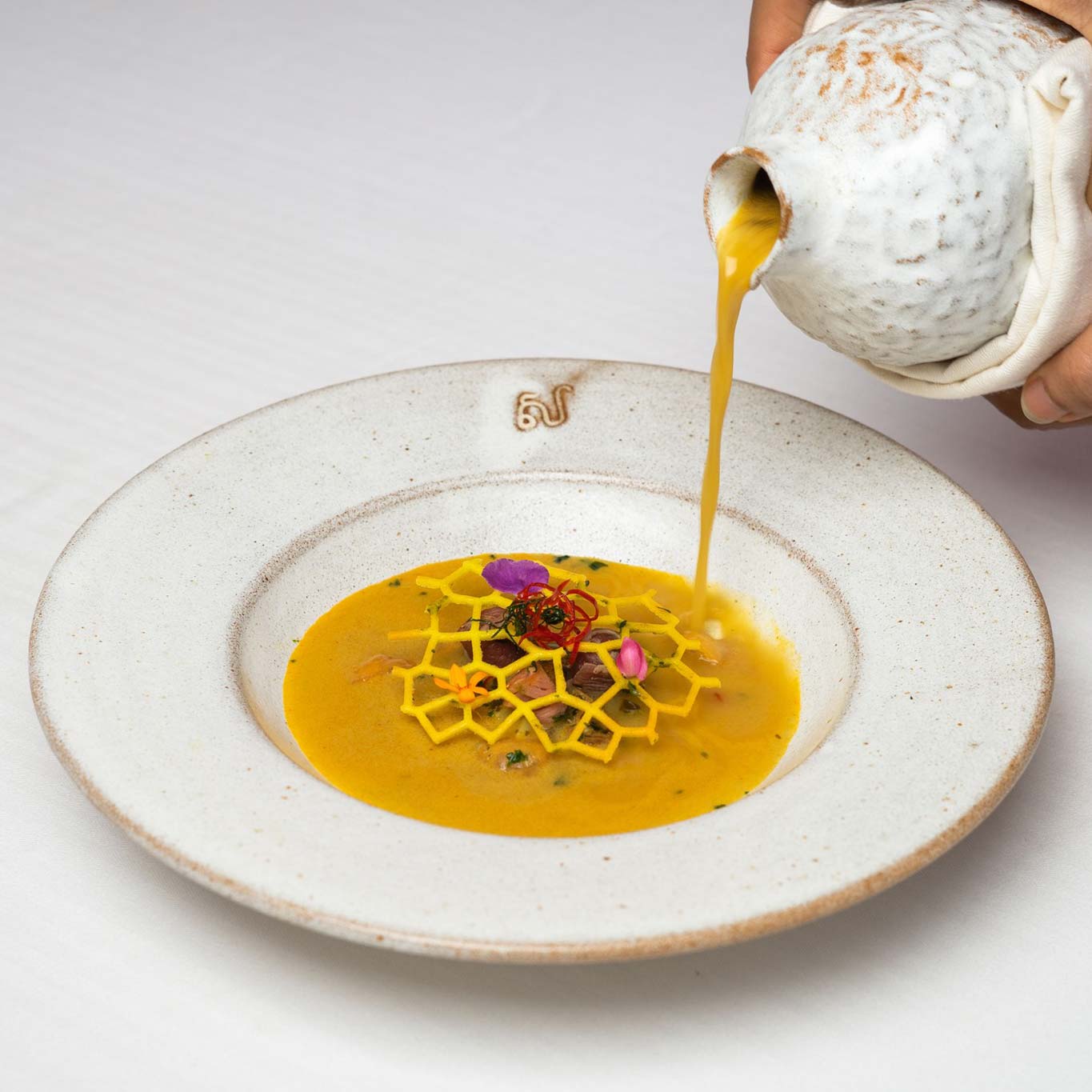
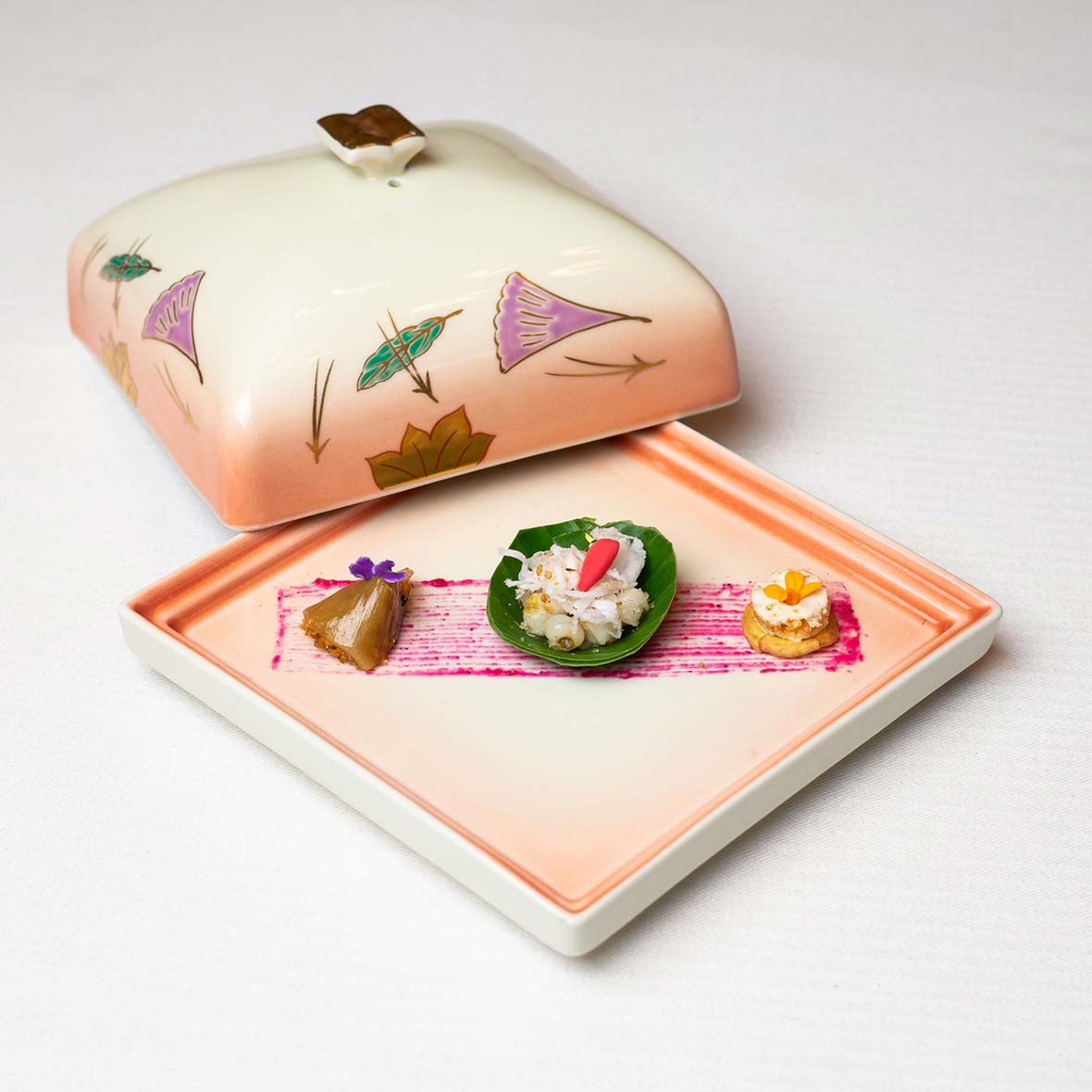
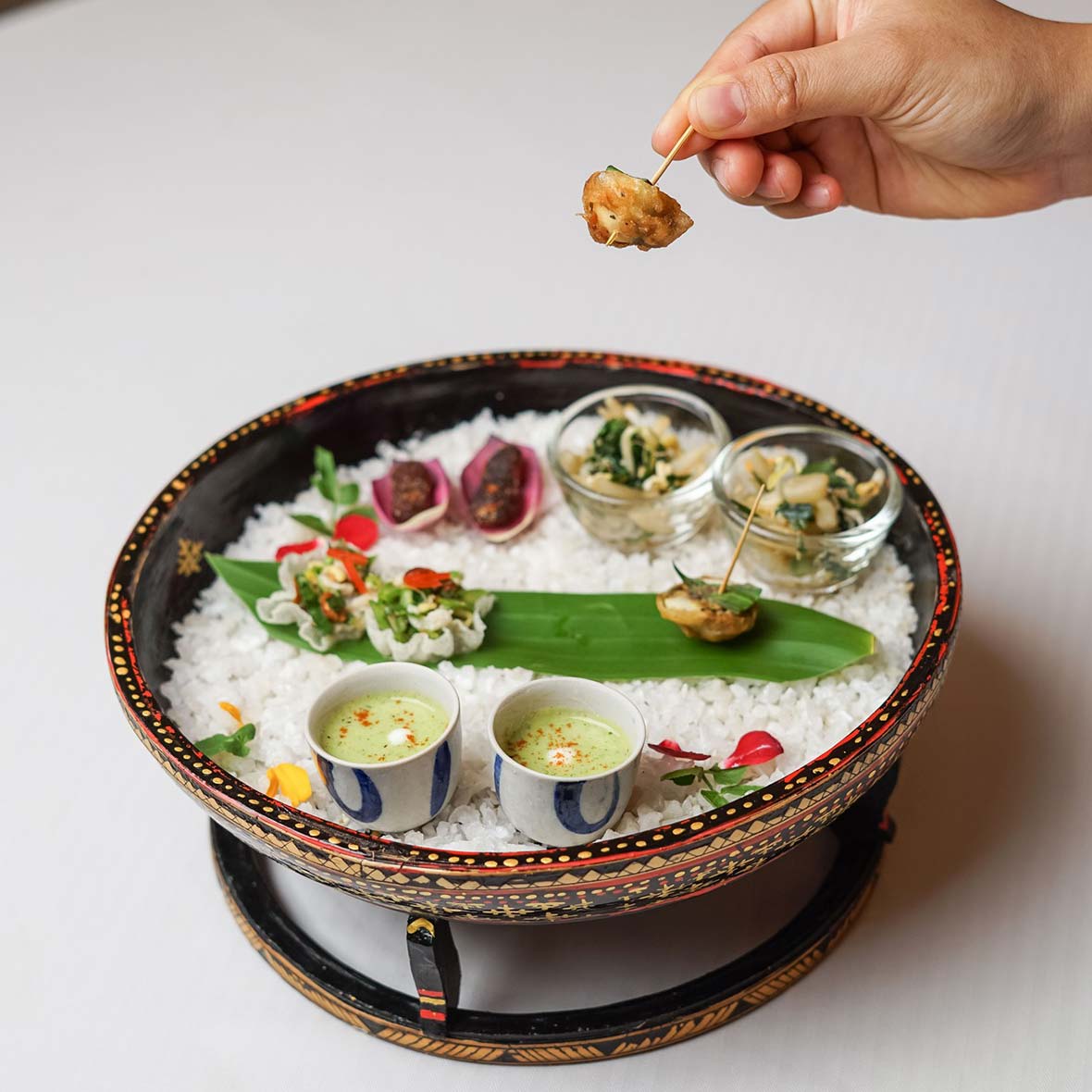
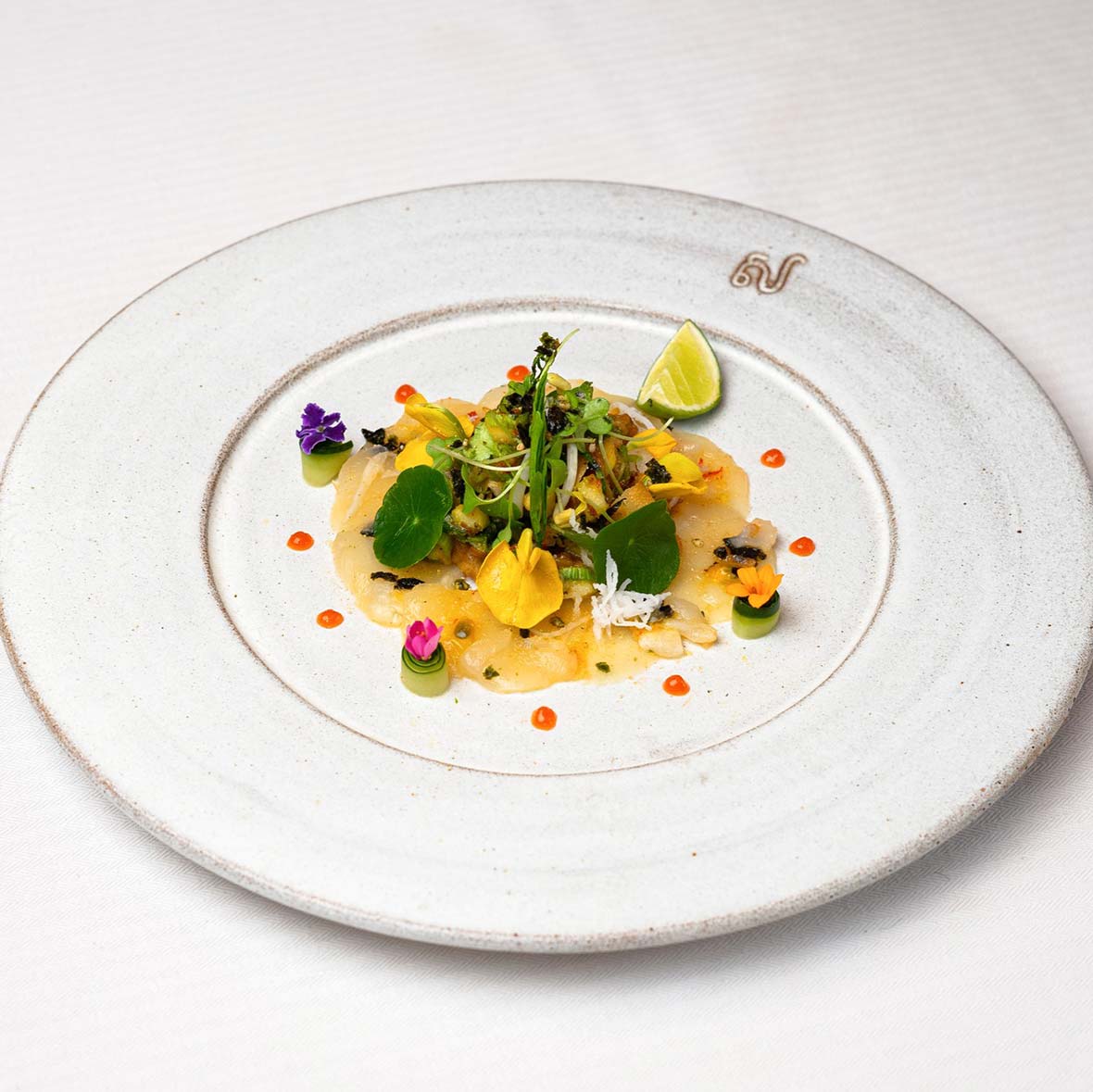
Kimsan has carved out an illustrious career beyond mere cooking. She’s appeared as a host, guest speaker and participant at competitive events around the world, and also runs the stunning Sombok fine-dining restaurant in Phnom Penh. Unfeasibly, she even finds time to travel to other Cambodian provinces to sample and incorporate new ingredients and was selected as a finalist at last December’s “The Exceptional” event to find Cambodia’s best female chef.
In November 2023, Embassy put on a show-stopping month for devotees when the indefatigable Kimsan unveiled a Chef’s Discovery Menu. The characteristically adventurous menu included Kep crab with prawn, seasonal vegetables, and rice crackers, and Banteay Srei pumpkin in chili paste, coconut cream and smoked duck breast. Embassy also holds regular events such as premium wine-tasting evenings and private parties and staged a cocktail night for the closing reception of this year’s Francophone Film Festival.
The Grand Statement
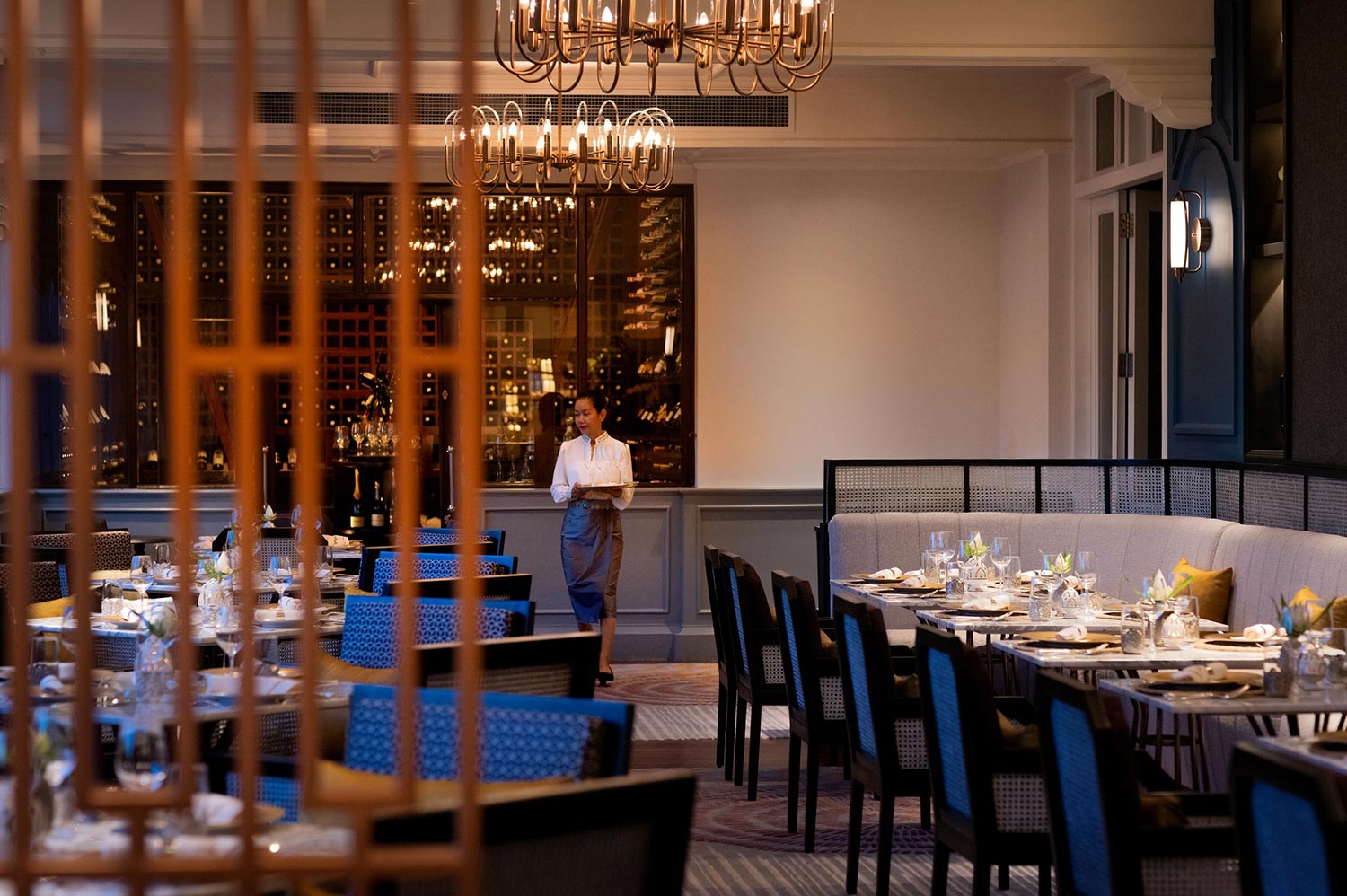
Raffles Grand Hotel d’Angkor, Siem Reap’s oldest and most stately guesthouse, is the setting for signature restaurant 1932, which opened in September 2022 to coincide with the hotel’s 90thanniversary after Raffles closed for the pandemic. Its unique selling point, appropriate for this grande dame location that’s witnessed so much history, is the past: the über-elegant venue celebrates Cambodia’s culinary heritage while updating it in subtle ways.
Guests may sample one of four curated tasting menus, each reflecting a particular era in the nation’s—or the hotel’s—history, all conceived by locally-born executive sous-chef Dorn Doeurt. They are all accompanied (if requested) by fine wines selected by Raffles’ resident sommelier; a typically sophisticated yet uncomplicated à la carte menu is also available.
“Being Siem Reap’s most storied hotel with 92 years of history, it is only fitting that our signature restaurant celebrates Cambodia’s rich culinary heritage while paying homage to the illustrious Khmer legacy,” says marketing manager Cedrick Ragel. “It took us time to come up with dishes that would reflect the eras we wanted to highlight, but Dorn Doeurt and our talented culinary team curated a series of multi-course Khmer tasting menus that we’re all proud of.”
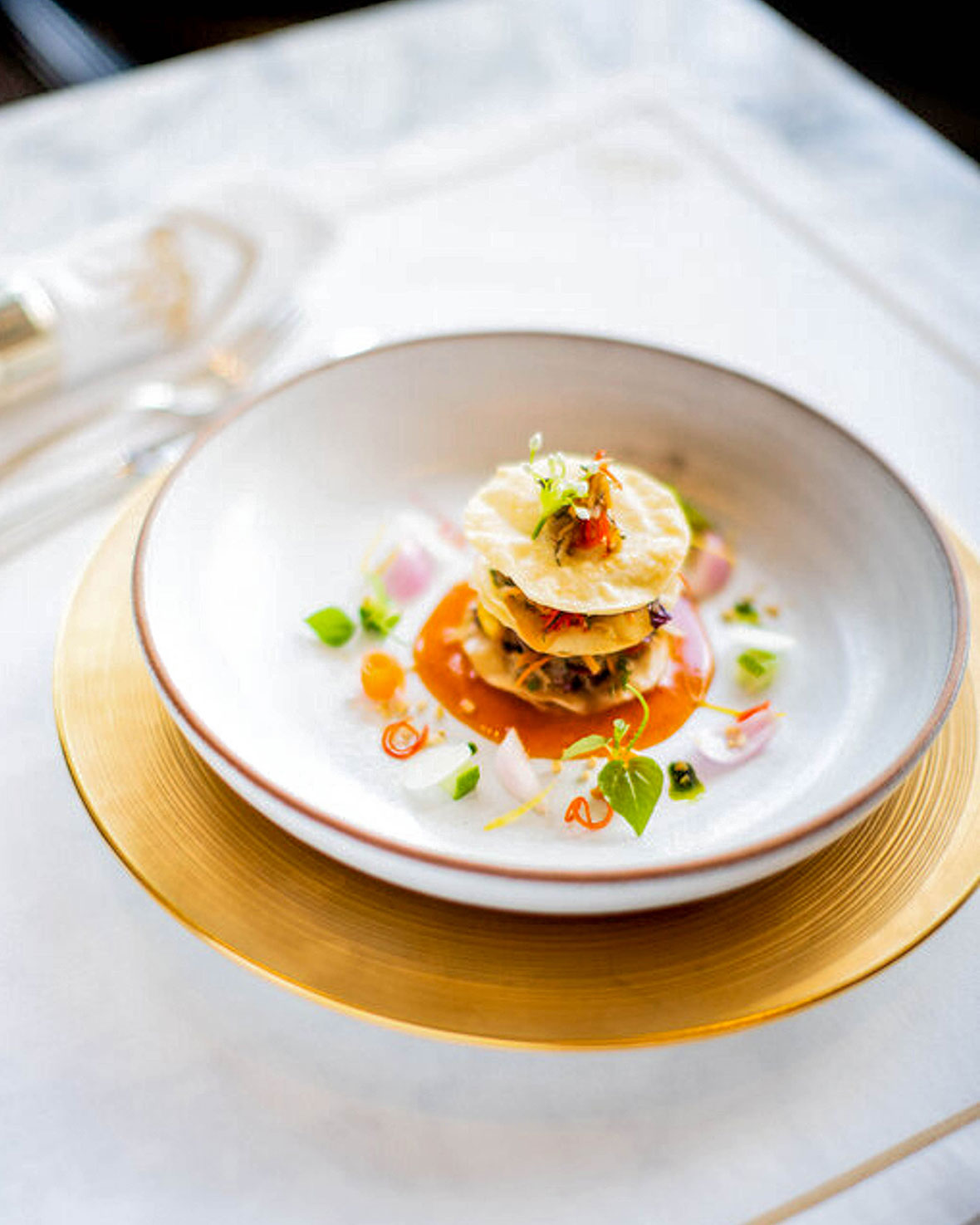
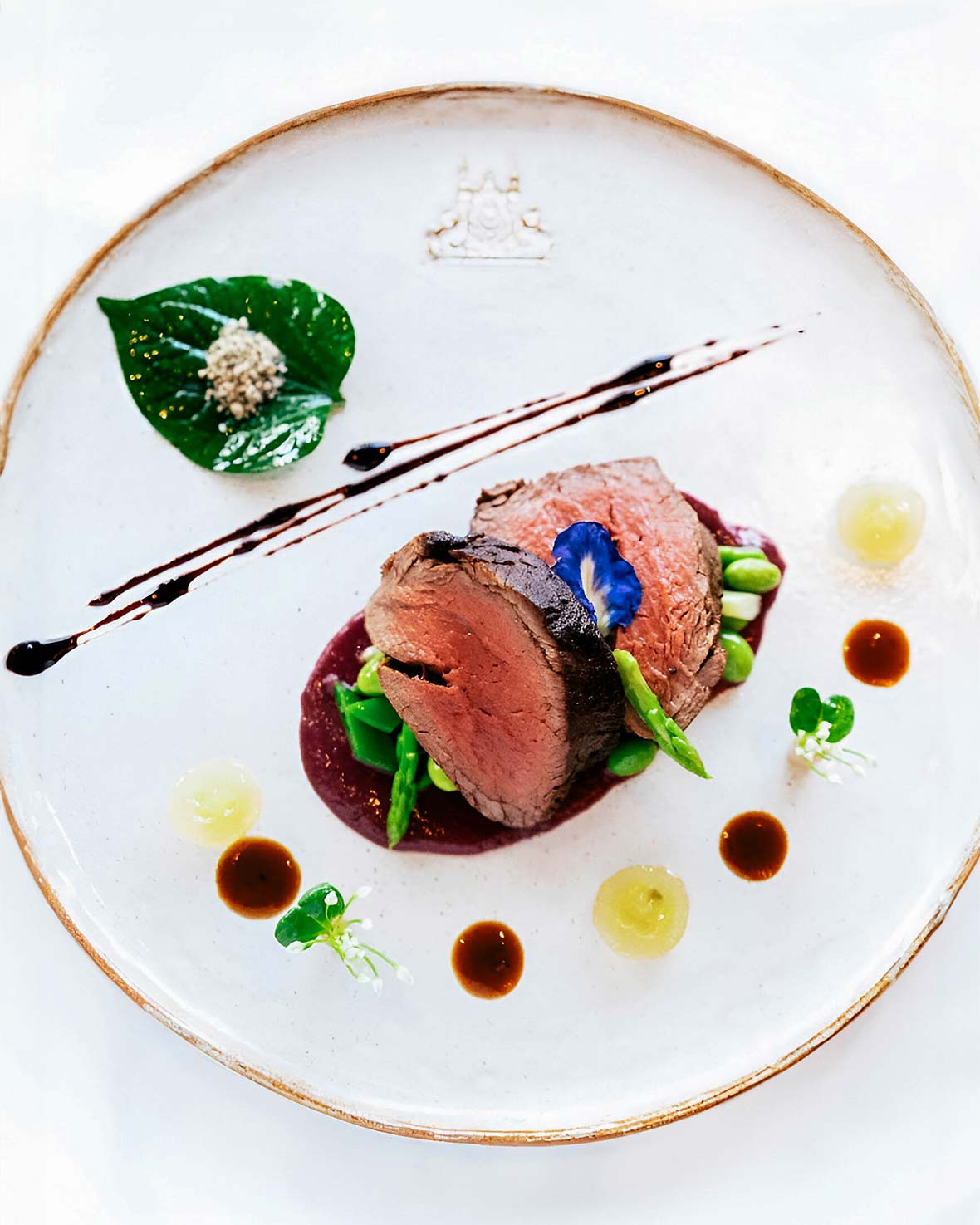
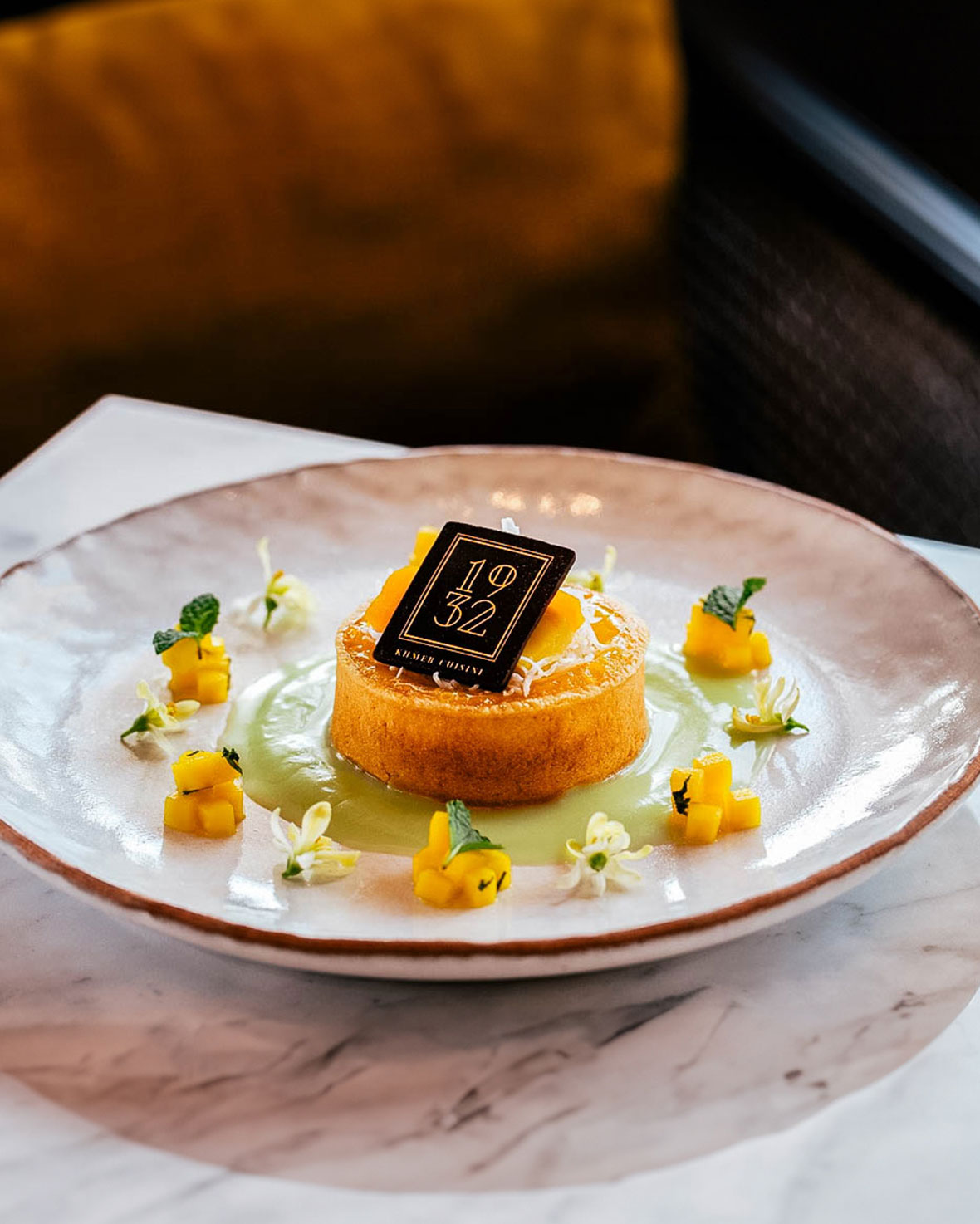
A man steeped in the nation’s gastronomy, from Royal Khmer cuisine to modern Khmer flavours, Doeurt meticulously researched and devised the menus to correspond with important decades in Cambodian history. Thus the 1930s represent “The Reign of King Sisowath Norodom”, with exquisite recipes served only to the Royal Family. The 1950s are remembered as “The Grand Renaissance”, a selection reflecting the relatively modest lifestyle of Cambodians as the nation emerged as a post-colonial, independent country; while the glory days of the pre-Civil War 1960s are celebrated as “The Golden Age”.
The menu choices even embrace the 1990s, a time of relative peace and restructuring, where Doeurt pays tribute to “The Raffles Grand Legacy”. Choices from this self-referential selection, the priciest menu, include salmon with lemongrass and duck consommé with straw mushrooms, eggplant and morning glory.
These delicacies are followed by fish amok with kroeung (curry paste), coconut milk and black sticky rice; char kdao Angus tenderloin, with basil, green beans, capsicum and sweet potato; a Cambodian cheese selection; and extravagant desserts such as kaffir lime sorbet with Elephant Bar gin. “Our focus is on local specialities,” says Cedrick. “It’s a Cambodian fine dining experience within [our] elegant mansion.”
